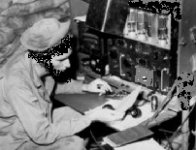Huge caps..!? They are not huge... (I don't know what you are talking about)...
Well that makes two of us then 😀
Decky is going to use shielded wire for the side mounting of the Coleman reg's so hopefully that will be an antidote to the poison you mentioned?
I also wonder if using grounded copper tubing as shielding for the wires would be a good or bad idea?
There is no reason to create solutions looking for a problem... Again: The wires from the mains transformer to the rectifier diodes / first caps on the raw dc supply must be as short as possible...
To all of you that are thinking of the Rod Coleman regulator heater solution, see Mortens pictures and stick with his layout in this thread. He has done the R & D and it works for him. No good trying to re-invent the wheel when there is an excellent solution at hand. Keep it simple with short wiring.
Peter
Peter
To all of you that are thinking of the Rod Coleman regulator heater solution, see Mortens pictures and stick with his layout in this thread. He has done the R & D and it works for him. No good trying to re-invent the wheel when there is an excellent solution at hand. Keep it simple with short wiring.
Peter
I agree Morten's design is impeccable but he is in temperate Denmark.
What do you think of the idea we need a heat proof alternative for global warming challenged locations? I want to run my Tram2 without a fan and not have my preamp spend half its life in the service lane.
Hugh, if DIYHIFI think the heatsink of the version 3 heater module is acceptable to handle th 2A3 heater current, then the heatsink on Morten's Coleman module is an overkill. Ever wih the DIYHIFI heater modules with Mortens heatsink, that is an overkill for the heat generated. About five years ago in August, I was in England, France, Belgium, Netherlands and it was 30 to 35 degrees Celsius. I was in China in August two years ago and it too gets hot and humid.
If Mortens Rod Coleman regulator heatsink setup keeps quite cool at 2A3 usage then in sunny Queensland at 10 degrees higher, it should not be a problem.
Has anyone using Rod Coleman regulators and Morten's heatsink setup in hot countries, please tell us about your experiences whether good or bad.
Peter
If Mortens Rod Coleman regulator heatsink setup keeps quite cool at 2A3 usage then in sunny Queensland at 10 degrees higher, it should not be a problem.
Has anyone using Rod Coleman regulators and Morten's heatsink setup in hot countries, please tell us about your experiences whether good or bad.
Peter
Hugh, if DIYHIFI think the heatsink of the version 3 heater module is acceptable to handle th 2A3 heater current, then the heatsink on Morten's Coleman module is an overkill. Ever wih the DIYHIFI heater modules with Mortens heatsink, that is an overkill for the heat generated. About five years ago in August, I was in England, France, Belgium, Netherlands and it was 30 to 35 degrees Celsius. I was in China in August two years ago and it too gets hot and humid.
If Mortens Rod Coleman regulator heatsink setup keeps quite cool at 2A3 usage then in sunny Queensland at 10 degrees higher, it should not be a problem.
Has anyone using Rod Coleman regulators and Morten's heatsink setup in hot countries, please tell us about your experiences whether good or bad.
Peter
That's right Peter: First... I have several times the cooling area of the original DHT regulators, and therefore there is NO HEAT ISSUES... Second, this is not the north pole, we have hot summers here and there is no problems what so ever.
Really: There is no reason to keep beating that dead heat-issue horse. There was a heat issue with the first versions of the original dht regulators from diyhifisupply. This has been corrected now with their third version, and with a solution like mine with even bigger cooling area, the temp is even lower. I just wish that people would move on instead of going on, and on and on about this. Stop worrying about heat and enjoy some music...! BTW; the hottest part on my tram II besides the tubes, is the mains transformer cover.
What people has to get used to is, that this is a class A amp used as a preamp, and class A amps simply run hotter than other designs. If this is not acceptable, then use another preamp that is not a Class A amp used as preamp.
Morten is right about the heat..this pre runs a bit hot..but makes no problem at all-
any news about the Brimar tube Morten ?
best Bjarne
any news about the Brimar tube Morten ?
best Bjarne
Hi Bjarne, The Brimar rectifier is really nice... I'm getting used to it's sound now and in a few days after some more listening I will go back to the Philips. I will update with a comparison between them, and some pics of the Brimar to show it's construction if anyone is interested in looking for one...
Do tubes need a burn in?
The following advice is via EML. I wonder if it applies to other tubes including rectifiers? If it does I cant comment on the sound of Peter's beautiful NOS GEC U52 as I only put about two hours on it.
The following advice is via EML. I wonder if it applies to other tubes including rectifiers? If it does I cant comment on the sound of Peter's beautiful NOS GEC U52 as I only put about two hours on it.
Good tube burn-in will assure maximum lifetime and develop the final sound This burn-in process will be extended in the first 50-100 hours under normal (home) use conditions. This means you must switch off the amplifier after each use, and in the beginning not use the tubes longer than 4 hours at one time. Many short use periods have a better result than few long periods. The tubes need the „cold“ periods in between for best formatting of the filament. Use different loudness levels from the beginning, and increase the maximum loudness gradually. If tubes with very little use were switched off longer than 12 months, is necessary to repeat the burn in.
Hugh, a very good piece of tube information. Do you have the Philips rectifier tubes yet.
Peter
Peter
Copper I am afraid offers no magnetic shielding?
Do you have the Philips rectifier tubes yet.
Peter
NOS Philips 5R4GYS Directly Heated Rectifier, Brown Base,1973 date code)
$39.95 http://www.partsconnexion.com/NOS-76262.html
An externally hosted image should be here but it was not working when we last tested it.
Borrow it when you pick up your U52 and burn it in for me 😀
Last edited:
$39.95 nos tube
i noticed that too, but i'm waiting to read reports of the sonics of the Philips here before i pull the pin... (hint hint)...😉
i noticed that too, but i'm waiting to read reports of the sonics of the Philips here before i pull the pin... (hint hint)...😉
Yes, were all waiting for Morten to get his 50-100 hours burn in on his NOS rectifiers so that using his exquisitely modded Tram2 in his great system with his musicians sophisticated auditory cortex he can let us know how he rates the Philip's 5R4GYS for his different 2A3's. Of course 45 DHT users might find a different rectifier e.g. the U52, works better to create the sound they are after. I guess considering theses individual variations you might just consider buying a 5R4GYS, given its affordability, reputation and compatible spec's.
But, utlimately it comes down to how the rectifier sounds. If you have a U52 rectifier which costs $250.00 and sound bloody marvellous and the Philips or Brimar 5R4GYS which sound good, which would you go for??? When Hugh gets his Tram2 back with the mods and TJ 2A3 tubes, I will post the results.
Peter
Peter
Ultimately rectifiers dont have a sound. Ive tested this out for myself. I put my Dutch, Russian, USA, Australian and Chinese rectumfriers out on my audio rack. When uninserted they made no sound whatever that I could hear and the dB readings didnt go up over base readings.
I therefore posit that its the sum of the interacting web of components that matters and that no type of rectifier has its own sound.
In the meantime Ive tracked down an exceedingly rare and old rectifier from an old radio operator called Luigi that rather surprisingly is younger then him. It should, on paper, outperform every other tube. It will probably sound awful. If its any good I will let you all know after cornering the worlds remaining supply and inflated the already ridiculous price to the incredulously ridiculous level.
I therefore posit that its the sum of the interacting web of components that matters and that no type of rectifier has its own sound.
In the meantime Ive tracked down an exceedingly rare and old rectifier from an old radio operator called Luigi that rather surprisingly is younger then him. It should, on paper, outperform every other tube. It will probably sound awful. If its any good I will let you all know after cornering the worlds remaining supply and inflated the already ridiculous price to the incredulously ridiculous level.
Last edited:
Hugh, is that the same Luigi that is on Super Mario Brothers. If not, what is the rectifier tube called. With tubes, you have to put your ear up to them, just like seashells.
Peter
Peter
Attachments
Last edited:
i noticed that too, but i'm waiting to read reports of the sonics of the Philips here before i pull the pin... (hint hint)...😉
You can check out my sonic impression on the Philips a few pages back when I recommended it... Also, Bjarne (beardman) is now also using the Philips in his Tram II and likes it a lot...
You can check out my sonic impression on the Philips a few pages back when I recommended it...
I wonder about how many hours your Philips had when you posted that impression and if the sound might develop further?
Hugh, is that the same Luigi that is on Super Mario Brothers. If not, what is the rectifier tube called. With tubes, you have to put your ear up to them, just like seashells.
Peter
Luigi tells me he was a radio operator in WWII and sent a picture with his special rectifiers in the top right. I cant identify them from his photo so its safe to post:
Attachments
- Status
- Not open for further replies.
- Home
- DIY HiFi Supply
- DHT OTL Linestage - Tram 2

